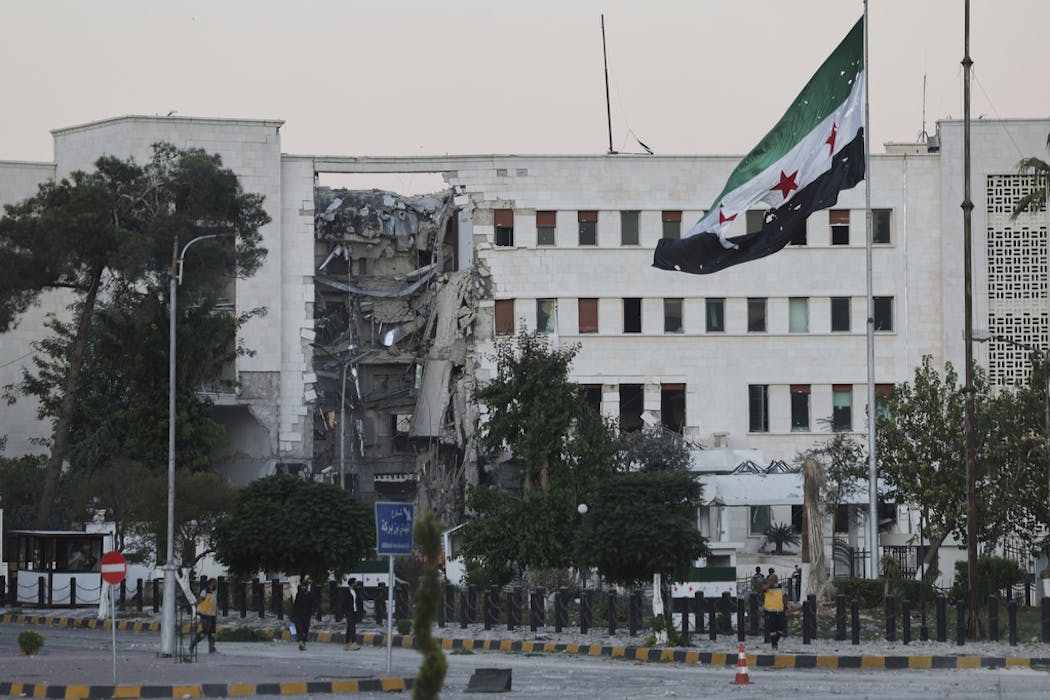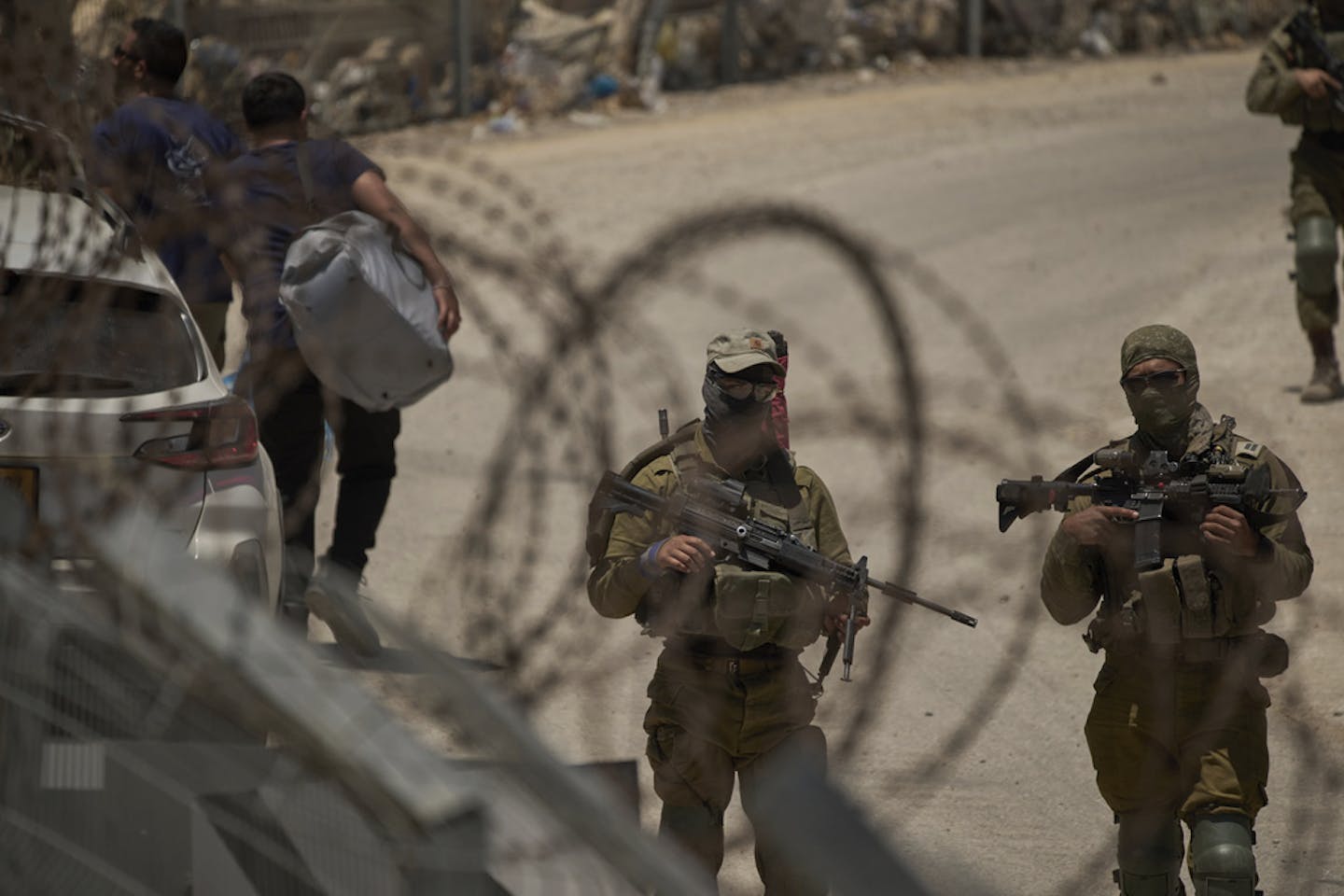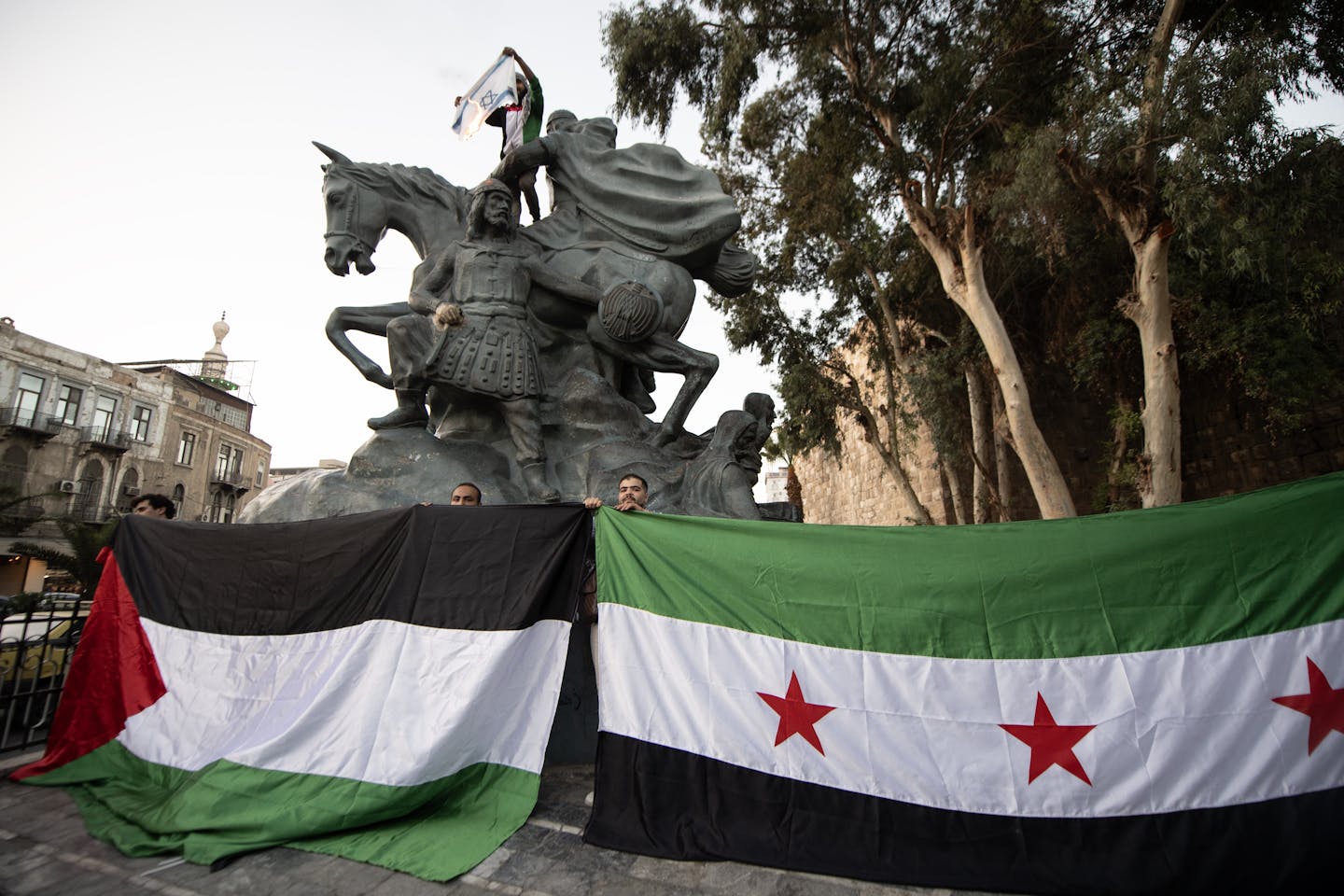
On Sept. 21, 2025, a senior U.S official boasted that an Israeli-Syrian security agreement to resolve months of conflict was “99% complete” and would be announced within two weeks.
Those two weeks have now passed. And the reality on the ground suggests that the two countries are still far from sealing any deal to end the Israeli military incursions into Syrian territory that have occurred since the fall of Syrian President Bashar Assad in December 2024. Just days after the American official gave his prognosis and as negotiations continued, Israel struck several Syrian targets.
Citing negotiation sources, several news outlets reported that the delay in securing a deal was primarily related to Israel’s 11th-hour demand of creating a so-called humanitarian corridor that would link the Israeli-occupied Golan Heights to Sweidah, a city in southern Syria. Israel said the purpose is to protect religious minorities in the Golan Heights and Sweidah.
The hitch, after months of U.S.-mediated talks, reflects Syria’s vulnerability in these negotiations. Seeking to move on after year of war, the current Syrian leadership is eager to snuff out remaining internal violence, secure the borders and return to the United Nations-brokered truce with Israel that had been in place for decades. However, concluding a deal with its militarily superior neighbor risks the further fragmentation of Syria and an entrenched violation of its sovereignty.
Indeed, as an expert on the Middle East, I believe the talks and the potential last-minute snag point to Israel believing it has the upper hand. Meanwhile for Syria, a desire for security can’t mask what it sees as Israel’s expansionist policy in the region, and concerns that it is using things like a proposed humanitarian corridor as a way to achieve recognition of areas only recently under Israeli control.
The fraught history of Syrian-Israeli relations
Following the United Nations’ partition of Palestine in 1947 and the proclamation of the state of Israel in 1948, a coalition of five Arab armies, including Syria, declared war on Israel and lost the ensuing conflict.

As a result, Syria was forced to sign an armistice agreement with Israel on July 20, 1949.
Yet de facto peace never lasted long. The two countries squared off in repeated conflicts in the next 25 years, including the Six-Day War in 1967 that launched Israel’s still-ongoing occupation of Syria’s Golan Heights.
In 1974, the U.N. brokered the Agreement on Disengagement between Israeli and Syrian forces. While not a peace agreement, the pact served to codify a ceasefire and created a buffer zone between the two countries monitored by U.N. observers.
For 50 years, that status quo held uneasily, as subsequent peace efforts failed. The conflict was effectively frozen, punctuated by occasional flare-ups of violence.
Entering the post-Assad era
The fall of Assad and his goverment in December 2024 suddenly injected a new dose of uncertainty into Israel-Syria relations.
As rebel-turned interim President Ahmed al-Sharaa worked to consolidate power and vowed to restore peace and stability for his war-torn country, Israel went on the offensive.
Shortly after the collapse of the Assad government, Israeli Prime Minister Benjamin Netanyahu declared the 1974 Disengagement Agreement “void until order is restored in Syria.” As a result, and in violation of the agreement, Israel occupied the demilitarized zone in the Golan Heights and expanded its control inside Syria. For months, Israel has conducted a campaign of airstrikes across Syria, repeatedly bombing Syrian military positions, including near the presidential palace in Damascus. Israel says it is doing so to stop weapon transfers from Iran and to protect its borders and ensure its security.
At the same time, it has pressed the U.S. to keep Syria weak and divided, in part due to Netanyahu’s and his far-right coalition’s hostility to an Islamist-governed neighbor.
The U.S., at the urging of allies like Saudi Arabia which are close with the Sharaa government, recently lifted sanctions on Syria. For months, officials of the Trump administration have likewise mediated talks and pushed Israel and Syria to conclude an agreement to stop Israel’s seizures and air campaign.
For his part, Sharaa and his negotiators have continually pressed for a halt to Israeli incursions and a return to the 1974 disengagement agreement and the de facto borders it established, describing it as a “necessity.”
Hints of common ground on Hezbollah and Iran
Aside from Syria’s immediate desire and chief priority to end all hostilities on its territory, there are some potential benefits to a new arrangement with Israel from both countries’ perspective.
Before its fall, the Assad government was close to Hezbollah and the Islamic Republic of Iran. Hezbollah, a Lebanese Shia Islamist political party and paramilitary group funded by Iran, supported Assad and played a major role in Syria’s civil war.
Furthermore, under Assad’s government, Syria served as a land bridge between Iran and Lebanon through which Hezbollah fighters transported their military equipment, money and drugs.
Under Sharaa, Syria’s central government is now closely allied to the Arab Gulf countries that have long been Iran’s regional rivals. In strengthening its security, Syria will no longer serve as Hezbollah-Iran meeting point, which will subsequently benefit Israel. For Syria, it will also stabilize the country against Iranian interference.
The risk of Syria’s further fragmentation
The risks of a deal with Israel from Syria’s standpoint, however, are significant.
In defending its incursions into Syria, Israel has pointed to both the security threat it says Syria poses to Israel and also the situation of minority groups in Syria, where sectarian violence has risen against communities like the Christian Orthodox and the Druze.
Israel has floated a number of plans for how it intends to retain a heavy footprint in Syria beyond the occupation of the Golan Heights and the 1974 Agreement of Disengagement.
One option on the table is an extension of the historical buffer zone and splitting Syria into autonomous zones, in which Sweidah province would be a demilitarized buffer zone between Israel and Syria. With the most recent idea of a humanitarian corridor couched in the language of protecting Syrian minorities, Israel could be seeking a wider area under more explicit control.
From the Syrian perspective, all of the above are backdoor ways by Israel to cement post-Assad military actions beyond the scope of the 1974 truce. As such, agreement to a security pact on Israeli terms would mean jeopardizing or shrinking Syria’s sovereignty and territorial integrity.

The Syrian leadership’s challenge going forward
After years of war and fragmentation, most Syrians will take any cessation of hostilities with Israel as a welcome development – but not at any cost. Many Syrians are opposed to further fragmentation of the country. And considering the ongoing killing and displacement of Palestinians in Gaza – described recently by a U.N. body as genocide – and Syria’s historic commitment to pan-Arabism, many Syrians will likely be skeptical if a security deal with Israel means a de facto recognition of the land and sovereignty Israel has acquired since December 2024.
That points to the major dilemma underpinning Sharaa’s position. Syria is in a vulnerable place and is not in position to negotiate from strength, especially as Sharaa tries to open Syria to the Western world, boost its economy and bring back the civil war refugees from neighboring countries. Seeking to consolidate his government’s hold on power and end the presence of a foreign military, Sharaa likely sees a security agreement as in his immediate interest.
While such a pact may bring some stability to Syria and the region, it could also codify Israel’s nearly unchallenged regional power.
This article is republished from The Conversation, a nonprofit, independent news organization bringing you facts and trustworthy analysis to help you make sense of our complex world. It was written by: Mireille Rebeiz, Dickinson College
Read more:
- Deadly strike in the Golan Heights risks opening new front in long-disputed territory
- The Druze are a tightly knit community – and the violence in Syria is triggering fears in Lebanon
- Amid fragile ceasefire, violence in southern Syria brings Druze communities’ complex cross-border ties to the fore
Mireille Rebeiz is affiliated with the American Red Cross.


 The Conversation
The Conversation
 WISC-TV Channel 3000
WISC-TV Channel 3000 WBAL NewsRadio
WBAL NewsRadio America News
America News Raw Story
Raw Story Newsday
Newsday WTOP Washington DC
WTOP Washington DC